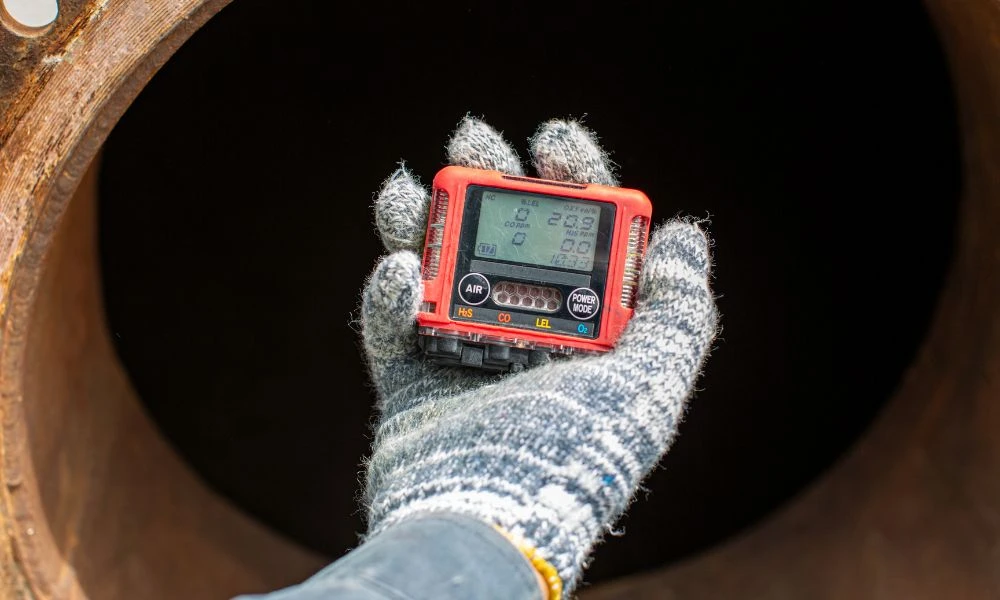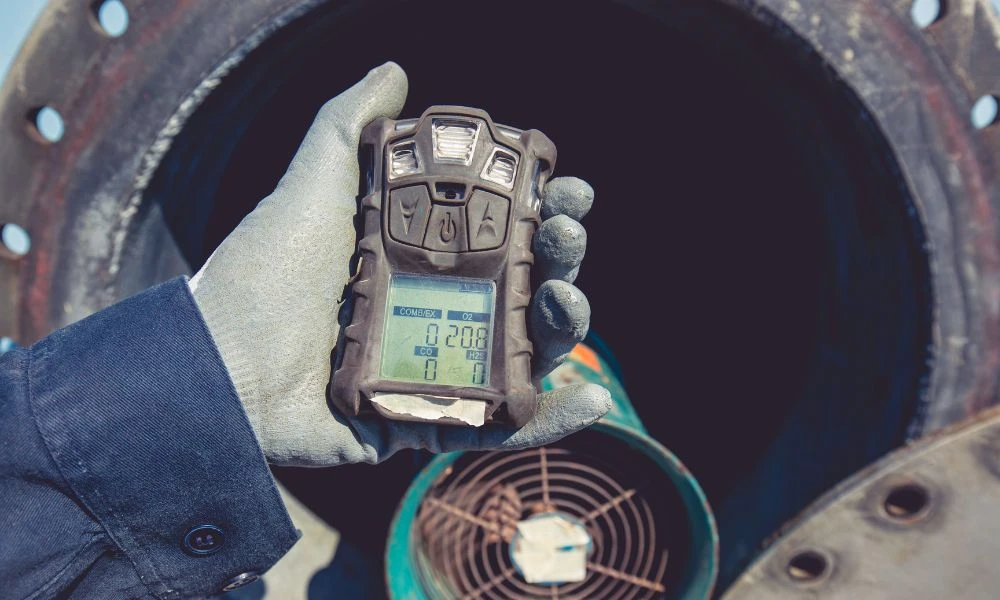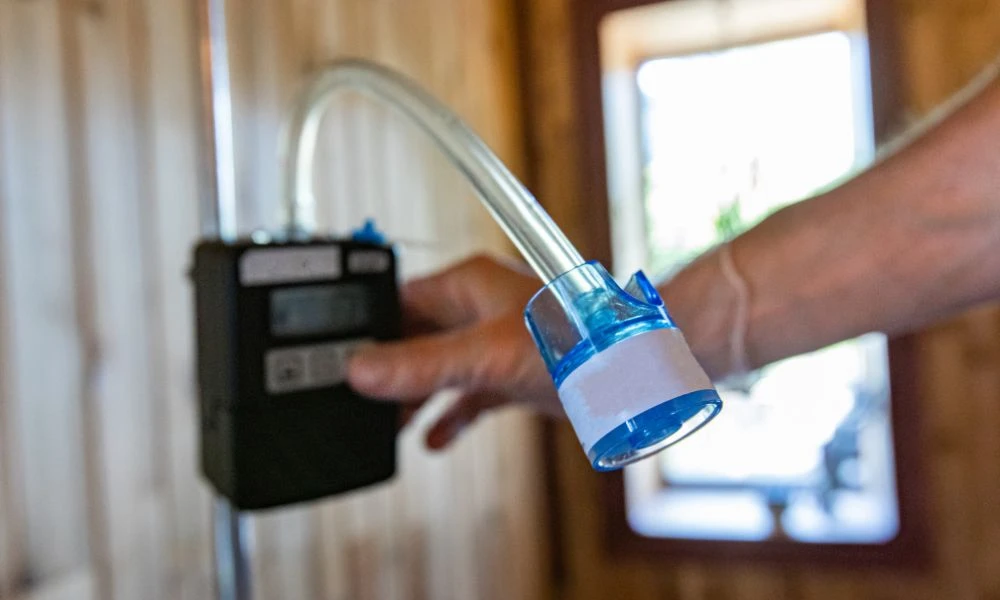Indoor air quality (IAQ) is a paramount aspect of our daily lives, yet it often escapes our notice. This comprehensive guide aims to shed light on the multifaceted process of indoor air quality testing, exploring various methods, tools, and considerations involved and aims to answer the question "How Indoor Air Quality Testing Is Conducted".
Whether you're concerned about common indoor air pollutants, the signs of poor IAQ, or the different testing methods available, this guide has you covered.
Chapter 1: Importance of Indoor Air Quality Testing
Before delving into the intricacies of indoor air quality (IAQ) testing, it's crucial to recognize its fundamental importance. This preliminary understanding highlights the widespread impact of poor IAQ on health, emphasizing the prevalence of respiratory issues, allergies, and various health problems associated with indoor pollutants.
The upcoming chapter aims to delve into these consequences, shedding light on the link between suboptimal IAQ and conditions such as respiratory ailments, allergies, headaches, and fatigue.
Understanding these health risks underscores the significance of regular IAQ testing as a proactive step toward creating a healthier indoor environment. This approach empowers individuals to make informed decisions and take preventive measures, contributing to optimal well-being in indoor spaces.
Chapter 2: Common Indoor Air Pollutants
This section provides a detailed exploration of common indoor air pollutants, including volatile organic compounds (VOCs), mold spores, dust mites, and radon. Understanding the sources and characteristics of these substances is crucial for assessing and addressing indoor air quality effectively.
VOCs emanating from various household products can contribute to respiratory issues. Mold spores, thriving in damp environments, pose risks to structures and respiratory health. Dust mites, microscopic yet impactful, can trigger allergies. Radon, a radioactive gas, can seep into buildings and pose health risks.
Recognizing these pollutants lays the foundation for informed testing and remediation, enabling individuals to enhance indoor air quality and mitigate potential health concerns proactively.
Chapter 3: Signs of Poor Indoor Air Quality
This section emphasizes the need for readers to be aware of signs indicating poor indoor air quality (IAQ) before delving into testing procedures. Symptoms such as persistent coughing, headaches, fatigue, and other indicators associated with compromised IAQ are outlined.
Recognizing these signs early on is crucial for prompting proactive measures to improve air quality. By connecting health symptoms to potential IAQ concerns, individuals can take timely action, implementing strategies to enhance air quality and create a healthier indoor environment.
This proactive approach underscores the importance of preventive measures rather than waiting for issues to escalate.
Check out our blog post on air quality testing for allergies to understand and comprehend the signs of Poor Indoor Air Quality.
Chapter 4: How Indoor Air Quality Testing Is Conducted
This is the core of the guide, where readers will learn about different methods employed in indoor air quality testing. Topics covered will include:
Air Sampling:
Collecting air samples for pollutant analysis in indoor air quality testing involves using devices like air pumps and sampling media. These devices are strategically placed in different areas of the indoor space to capture representative samples.
Strategic placement considers factors like potential pollutant sources, air circulation, and areas of high occupancy. The collected samples undergo detailed analysis in laboratories to identify and quantify specific pollutants.
This process is crucial for gaining a comprehensive understanding of indoor air quality, identifying areas for improvement, and addressing potential sources of concern. The accuracy of the collected samples and subsequent analysis is fundamental to making informed decisions for enhancing indoor air quality.
Surface Sampling:
Surface sampling for mold and contaminants in indoor air quality testing employs various techniques, including swabbing, tape lifting, and others. Swabbing uses a sterile swab to collect samples from textured surfaces or areas with visible mold growth.
Tape lifting involves applying adhesive tape to surfaces to capture particles. Bulk sampling collects physical material for analysis, providing insights into the composition of building materials. Dust sampling assesses settled dust for allergens and particulate matter.
Contact plates and micro-vacuum sampling offer additional methods for gathering viable mold spores and fine particles, respectively. Each technique serves specific purposes in identifying and quantifying contaminants. Analyzing the collected samples in a laboratory helps pinpoint sources of indoor air quality issues and guides remediation efforts.
Particle Counting:
Particle counting is a crucial aspect of indoor air quality testing, specifically when evaluating airborne allergens and pollutants. This process involves using specialized devices called particle counters to analyze the concentration and size distribution of particles in the air.
By categorizing particles based on size, professionals can assess their behavior and potential health effects. Particle counting is particularly relevant for monitoring levels of airborne allergens like pollen and mold spores and pollutants such as fine particulate matter (PM2.5).
Real-time monitoring capabilities allow for immediate feedback, aiding in the prompt identification of sources and implementation of corrective actions. Understanding particle counts is essential for assessing indoor air quality, identifying potential health implications, and guiding efforts to create a healthier indoor environment.
Gas Testing:
Specialized equipment plays a pivotal role in indoor air quality testing, detecting gases like carbon monoxide (CO), radon, and volatile organic compounds (VOCs). Carbon monoxide detectors, radon testing kits, and VOC monitors are employed to identify and measure these gases.
The importance of pinpointing specific gases lies in understanding their unique health implications, enabling targeted mitigation strategies, and ensuring the safety of occupants. Identifying the sources of CO, radon, and VOCs allows for prompt interventions and preventive measures, contributing to a healthier indoor environment.
Chapter 5: Hiring a Professional vs. DIY Indoor Air Quality Testing
We will delve into the considerations surrounding whether to hire a professional indoor air quality testing service or opt for do-it-yourself (DIY) testing kits. The analysis will highlight the pros and cons of each approach, emphasizing the distinct advantages offered by professional services.
Professional Indoor Air Quality Testing:
Pros:
Expertise: Professional services bring a wealth of expertise to the table. Trained professionals have a deep understanding of air quality dynamics, pollutant sources, and testing methodologies.
Comprehensive Analysis: Professionals conduct thorough analyses of indoor air quality. Their experience allows them to assess various parameters and identify complex issues that may be absent to untrained individuals.
Advanced Equipment: Professionals use sophisticated equipment for testing, ensuring accurate and reliable results. This high-tech equipment often surpasses the capabilities of DIY kits, providing a more detailed assessment of indoor air quality.
Identification of Subtle Issues: Trained professionals can identify subtle indoor air quality issues that DIY kits might overlook. This includes hidden mold growth, low-level gas emissions, or other nuanced problems that may impact air quality.
Cons:
Cost: Professional services typically come with a higher cost compared to DIY kits. The investment, however, is justified by the expertise and comprehensive analysis provided.
Time: Scheduling and conducting professional testing may take some time, and results may take some time to arrive. This could be a consideration for those seeking quick insights.
DIY Indoor Air Quality Testing Kits:
Pros:
Affordability: DIY kits are generally more budget-friendly than hiring professional services. They offer a cost-effective option for individuals on a tight budget.
Convenience: DIY kits are convenient and easy to use. They often come with clear instructions, allowing homeowners to collect samples at their own pace.
Quick Results: DIY kits may provide quicker results compared to waiting for an appointment with a professional service. This can be advantageous for those seeking immediate insights.
Cons:
Limited Expertise: DIY kits rely on individuals to collect samples and interpret results. This lack of professional expertise may lead to misinterpretations or overlooking subtle issues.
Less Comprehensive: DIY kits may provide a different level of comprehensive analysis than professional services. They may be limited in the range of pollutants or parameters they can assess.
Potential for User Error: The accuracy of DIY testing relies on the user following instructions precisely. User error in sample collection or analysis could compromise the reliability of results.
Check out our blog on "Air quality testing in my home" to get a better understanding of this section.
Chapter 6: Interpreting Indoor Air Quality Test Results
This section covers common pollutants, acceptable levels, and potential health risks and encourages a comparative analysis for a thorough understanding of indoor environmental conditions.
Key Points:
Common Pollutants: The guide introduces readers to prevalent indoor pollutants, encompassing carbon monoxide, radon, VOCs, mold spores, dust mites, and particulate matter.
Acceptable Levels: Building on the identification of pollutants, the guide explains acceptable levels set by regulatory bodies, allowing readers to assess their indoor environment against established benchmarks.
Potential Health Risks: Emphasizing health implications, the guide details potential risks associated with elevated concentrations of specific substances, fostering a deeper understanding of the consequences.
Comparative Analysis: Encouraging a comparative analysis against established standards, the guide provides a framework for readers to evaluate the quality of their indoor environment, aiding in the interpretation of test results.
Actionable Insights: The guide offers practical strategies and mitigation measures, empowering readers to address specific pollutant sources and implement proactive measures for improved indoor air quality.
Professional Consultation and Next Steps: Acknowledging the complexity of indoor air quality testing, the guide highlights the importance of seeking professional consultation for a more in-depth analysis. It outlines potential next steps for further investigation or remediation.
Chapter 7: Taking Action: Improving Indoor Air Quality
Following the completion of indoor air quality testing, this crucial section guides readers in taking practical steps to enhance their indoor environment. The focus spans from optimizing ventilation and controlling humidity levels to addressing specific pollutant sources.
Practical tips include promoting regular ventilation, using air purifiers, and controlling humidity levels to deter mold growth. Additionally, readers are advised to reduce volatile organic compounds (VOCs) by choosing low-VOC products and enhancing overall cleanliness to minimize dust and allergens.
The guidance extends to addressing mold issues promptly and efficiently. In essence, the section empowers readers with actionable insights, enabling them to transform their indoor spaces into healthier, more comfortable environments.
Chapter 8: Regular Monitoring and Maintenance of Indoor Air Quality
Maintaining good indoor air quality is an ongoing process that requires continuous effort and vigilance. This chapter emphasizes the importance of regular monitoring for sustained well-being, introducing readers to various tools and technologies for continuous assessment.
It covers practical guidance on routine maintenance, timely repairs, and the necessity of periodic retesting to ensure continued compliance with indoor air quality standards. The chapter also advocates for the adoption of healthy indoor practices and staying informed about emerging technologies.
By providing a comprehensive roadmap, readers are equipped with the knowledge and tools necessary to foster a consistently healthy indoor environment in the long term.
Check out Air Quality Testing from SMS LABS for your individual and business needs.
Conclusion
Summarizing the key points discussed in the guide, the conclusion will emphasize the importance of proactive indoor air quality management. By understanding the testing process, recognizing signs of poor IAQ, and taking informed actions, individuals can create healthier living and working environments. The guide will close with a call to prioritize indoor air quality for the well-being of ourselves and our loved ones.










